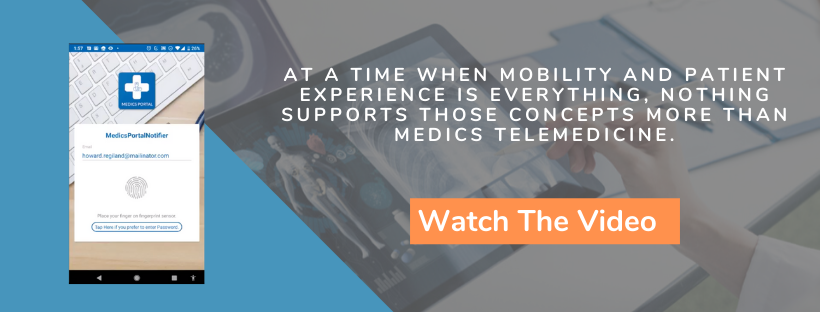Telemedicine Billing: 7 Crucial Considerations to Streamline Your App
Once a progressing form of medical care, telemedicine has rapidly developed into a practical option for many healthcare providers today. One recent report by the AMA stated that telehealth adoption is growing at a rate faster than any other type of medical care solution, experiencing an overall growth of 53%.
These changes were essentially set off by a number of extrinsic factors such as geographic, physical and distance-related constraints, especially for the patient population residing in remote regions of America.
Additionally, the ongoing COVID-19 pandemic entailed a speedy shift in priorities for a large number of healthcare organizations, including top players such as Medicare and Medicaid, which now permit an extended number of telehealth services to be covered.
In this piece, we will look at a few important considerations providers should be aware of to streamline billing for their telemedicine practice.
1. Integrate Medical Billing Software with your Telemedicine Platform
A robust medical billing software can enable healthcare organizations to customize both their billing and coding processes to reduce errors, expand profitability and accelerate claim reimbursements.
Some of the major benefits that come alongside integrating medical billing software with your telemedicine platform include:
- Increased Time Saving - With a medical billing software in place, patients can pre-register. This comes as a huge time-saver since all new patients you onboard complete intake forms and provide insurance-related information even before their first appointment. Following this procedure also saves up a lot of time on both the patient’s as well as your end.
- Streamlined Workflows - A medical billing software helps in immediately sending the claim to another party. It also allows the healthcare provider to post outlay at the point-of-care to speed up filing. Apart from accelerating the electronic claim process, the electronic tracking facet that comes alongside a medical billing software permits your financial team to update the cash flow management activity from time to time.
Apart from the ones mentioned above, there are a lot of other benefits that your practice can easily avail with the adoption of a medical billing software. It can take your telemedicine care delivery experience to an altogether different level.
2. Verify Beforehand that the Patient’s Insurance Covers Telemedicine
When starting out with your telemedicine journey, it always helps to verify beforehand whether or not your patient’s insurance covers telemedicine reimbursement, that too before their very first visit. While this may demand a little extra work on your part, you will only have to do it once for that particular policy.
One important thing to remember here is that you should always have a telemedicine insurance verification form handy when you call the payer. This makes it comparatively easier for you to document the representative’s answers.
Also, make sure you note down the call reference number.
In case the payer denies the claim at a later time, you can use this information to settle the claim. If the payer had said over the phone that telemedicine was covered in the patient’s insurance and you have the reference number for the call, they will have to honor that.
3. Know the Telemedicine Guidelines for each Payer
If you’re tackling billing with the major types of payers (Medicaid, Medicare, Private payers), this part may seem a little intimidating at first. However, the most effortless way to learn what each payer wants for telemedicine is simply calling and asking the right questions.
Some of the questions you can consider asking are:
- What healthcare services can be furnished via telemedicine?
- Which healthcare providers can bill for telemedicine?
- Is there a set of restrictions or conditions that need to be met before a patient qualifies for telemedicine?
- Are there any restrictions on the number of telemedicine visits patients can have through the span of one year?
While a few payers may have clear and definite answers to these questions, some others may just say that they cover telemedicine for only a few providers, and not put additional restrictions on it.
Since these guidelines greatly vary state-to-state and payer-to-payer, and also since telemedicine rules are fast changing due to the ongoing COVID-19 global pandemic, keep in mind that the representatives at the insurance carriers may, at times, not be certain when answering some of your queries. Therefore, you might want to consider cross-checking their answers more than once.
4. Inquire with the Payer what CPT Codes are Eligible for Billing Telemedicine
Today, the majority of payers advise healthcare providers billing telemedicine to use the suitable evaluative and management CPT code (99201 – 05, 99211-15) along with a GT or 95 modifier.
However, as a provider, it is critical for you to remember that Medicare covers an exhaustive list of eligible CPT codes, and certain private payers may necessitate that you use the telemedicine specific code 99444. This greatly differs based on the state your patient and the payer are in.
Yet again, the most effortless way to determine which code is going to be eligible for billing a certain patient is to call the payer up and inquire about the same. If they cannot provide you with a comprehensive list of all the codes that are going to be covered, simply try asking whether the 99444 is going to be covered and whether you can make use of the E&M CPT codes with a modifier.
5. Store Data on a Centralized Repository to Boost Interoperability
One state-of-the-art tool that has the potential to truly streamline billing for your telemedicine platform is cloud-based medical billing. This solution offers optimal data security and cost savings in multiple areas.
Cloud based billing software runs on a remote server and the information stored on it can be accessed through any authorized computer that has a valid internet connection.
This furnishes a supplemental layer of security for your billing data, protects it from breaches and cuts overhead costs by enabling each member of your organization to access data with the purchase of one single contract, instead of one for each system at each location your practice functions.
Furthermore, if your practice is spread across multiple locations, cloud-based medical billing software can be your go-to solution for gaining untethered access to data across locations. Providers and other authorized healthcare employees can also make use of mobile devices to retrieve information from the cloud at any given point in time. This greatly boosts interoperability and ameliorates overall outcomes.
With cloud-based medical billing, physicians and their healthcare staff can dedicate more time toward patient care, submitting clean claims and getting paid in a hassle-free manner.
6. Know how to Bill a Facility Fee
The majority of providers billing telemedicine don’t necessarily have to know about facility fee. However, if your practice is associated with a telemedicine program that bills through Medicare (or even Medicaid at times), you should have at least a rough idea about how facility fee is calculated and what goes into availing it.
A facility fee is nothing but an amount paid to the local healthcare facility that hosts the patient during a virtual visit.
For instance, in the present-day Medicare telemedicine model, a patient has to come in to an entitled originating site to start their telemedicine consultation with a provider at another, far off site. This particular originating site can then charge a facility fee for hosting the consultation.
In order to charge that facility fee, a healthcare provider can bill HCPCS code Q3014. You can also check out Medicare’s official website for more information on the same.
7. Maintain Documentation Integrity
Lastly, when it comes to billing telemedicine consultations, maintaining proper documentation integrity is an extremely crucial step.
To begin with, the total time spent on each session should be documented on the concerning physician’s note. In the virtual setting, level 3 and level 4 reimbursements should be purely calculated based on the time spent rather than physical examinations.
It is important for providers to ensure that more than 50% of their telemedicine encounter was spent coordinating care and not the other way round.
The physician’s documentation should encompass everything right from active diagnosis, differential diagnosis, associated risks, benefits, prognosis, instruction, benefits of the treatment being delivered, risk reduction, compliance, and coordination of care with other associated providers, if any.
The most important takeaway for providers here would be that telemedicine consultation documentation must meet the same standards as that of a face-to-face consultation.
All in all, you should think of telemedicine as an effective tool to add to your organization’s bottom line and expand your patient base. Only when you can ensure that it doesn’t act as a barrier and make your patients feel comfortable in a virtual setting, will everything else follow and make the entire experience seamless- be it billing or building better connections with your patients.
About Rahul Varshneya
Rahul Varshneya is the co-founder and president of Arkenea, a digital health consulting firm. Rahul has been featured as a technology thought leader across Bloomberg TV, Forbes, HuffPost, Inc, among others.



